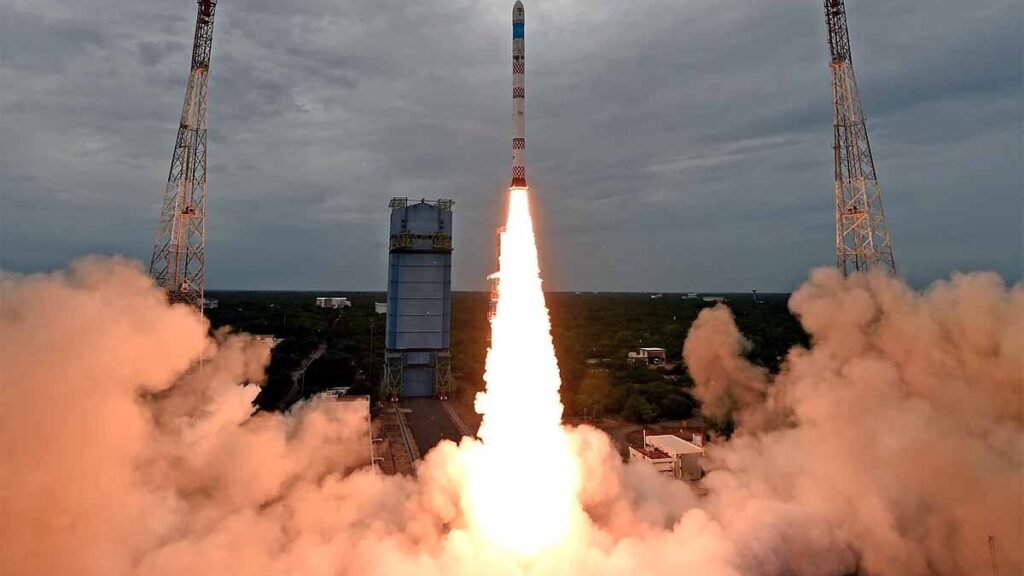ISRO successfully launched the SSLV-D3 rocket from Satish Dhawan Space Center in Sriharikota on the morning of 16 August 2024 at 9:17 am. The new Earth Observation Satellite EOS-8 was launched inside this rocket. Apart from this, a small satellite SR-0 DEMOSAT was also released as a passenger satellite. Both these satellites will revolve in a circular orbit at an altitude of 475 km from the earth. First let us know why today’s launch was historic?
What is SSLV-D3 rocket?
SSLV means Small Satellite Launch Vehicle and D3 means third demonstration flight. This rocket will be used for launching mini, micro and nano satellites.
With this, satellites weighing up to 500 kg can be sent to the lower orbit of the earth below 500 km or satellites weighing 300 kg can be sent to the sun synchronous orbit. The height of this orbit is above 500 km. In this launch, it will go up to a height of 475 km. After reaching there, it will release the satellite.
The length of the SSLV rocket is 34 meters. Its diameter is 2 meters. The weight of SSLV is 120 tonnes. SSLV can deliver payloads of 10 to 500 kg up to 500 km. SSLV is ready in just 72 hours. SSLV is launched from Launch Pad 1 of Satish Dhawan Space Center in Sriharikota.
Earth Observation Satellite i.e. EOS-8 will do the work of environmental monitoring, disaster management and technical demonstration. This satellite weighing 175.5 kg has three state-of-the-art payloads – Electro Optical Infrared Payload (EOIR), Global Navigation Satellite System Reflectometry Payload (GNSS-R) and SiC UV Dosimeter. In this, EOIR will take mid and long wave infrared images during day and night.
These pictures will provide information about disasters. Such as forest fires, volcanic activities. Through GNSS-R, the air on the sea surface will be analyzed. Soil moisture and floods will be detected. Ultraviolet radiation will be checked with SiC UV dosimeter. Which will help in the Gaganyaan mission.
The EOS-8 satellite will orbit in a low orbit above the earth, i.e. at an altitude of 475 kilometers. From here, this satellite will also provide many other technical assistance. Such as Integrated Avionics System. It has a Communication, Baseband, Storage and Positioning (CBSP) package. That is, a single unit can perform many types of tasks. It has a data storage capacity of 400 GB.
The life of this mission is one year. After this launch of SSLV-D3, SSLV will get the status of a fully operational rocket. Before this, this rocket has had two flights. The first flight SSLV-D1 was on 7 August 2022. The next flight i.e. SSLV-D2 was done on 10 February 2023. Three satellites were sent in it. EOS-07, Janus-1 and AzaadiSAT-2.
Internationally, small satellites are coming in large numbers. The market for their launch is growing. That is why ISRO built this rocket. An SSLV rocket will cost Rs 30 crore. Whereas a PSLV costs Rs 130 to 200 crore.
Source (PTI) (NDTV) (HINDUSTANTIMES)
